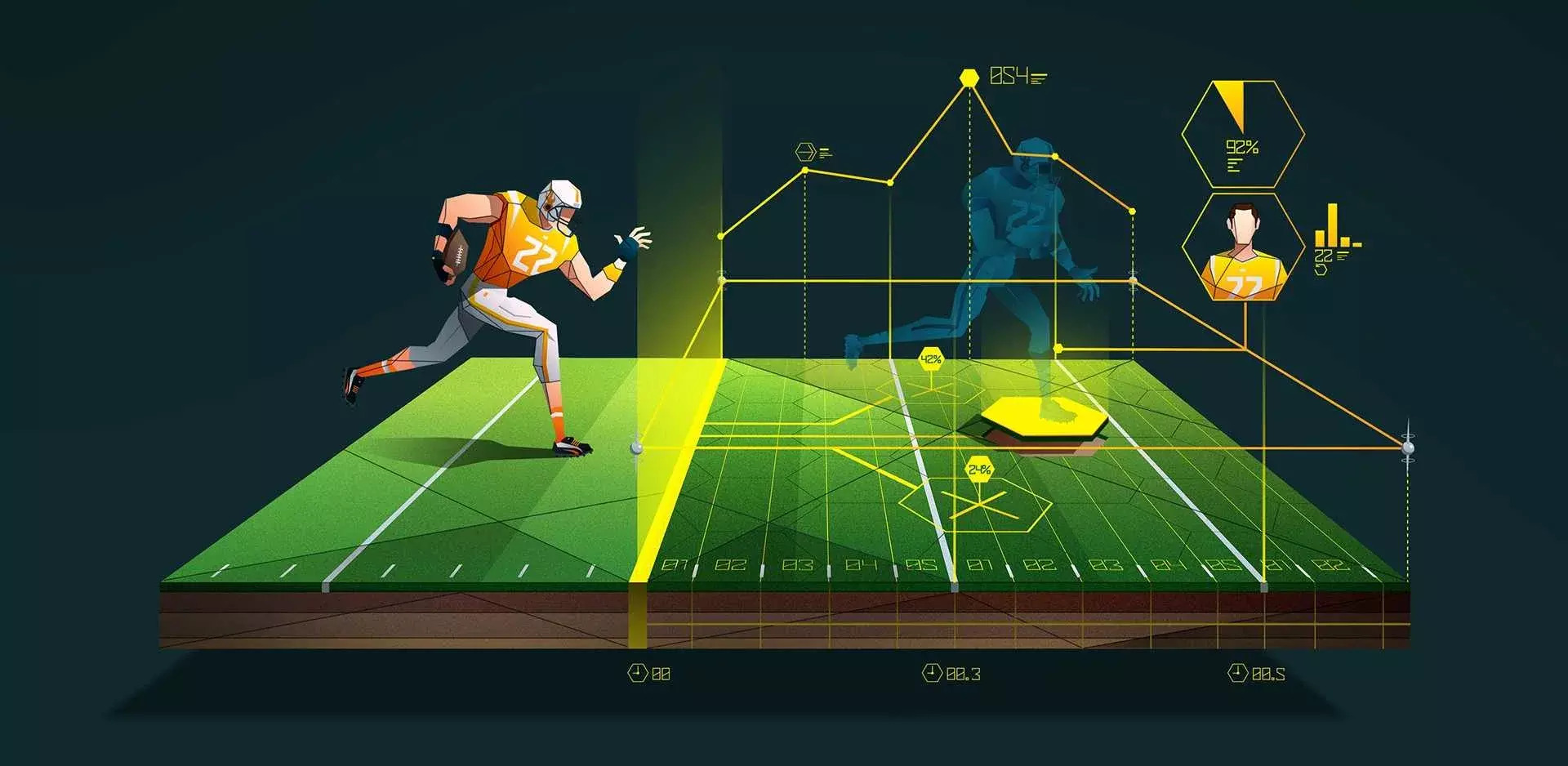The Impact of Technology in Sports
Sports and Technology
There has been a huge effect on sports because of data analytics. Data collection, analysis, and application in sports has made it simpler for teams to gain an advantage over their rivals. Coaching choices and player management of performance are two more areas where data analytics is used. Data analytics might potentially be utilized as a selling point in the future to secure corporate funding and new income opportunities.

Players’ ability to anticipate events and make tactical decisions in response to them is greatly enhanced by this technology. Even if he thinks the ball will travel to his left edge of the goalkeeper’s net rather than his right, a custodian will always make sure he’s ready to make a stop from either side. He won’t just move ahead to his right and then backwards, since he knows he has to go left. With each save, he won’t have to run as far out from the goal.
Changes in training practice’s
Over the last several decades, there has been a sea shift in how professional athletes are trained. Technology has led to an increase in the variety and complexity of training program. This is because technological progress has allowed for an expansion in the range of exercise options accessible to consumers.
GPS trackers and heart rate monitors may help teams determine how strenuous a given practice session should be for individual players. Teams may now improve how they perform on match day by customizing practices for each player using data collected from these tools. Players track their exercise progress by wearing gadgets that record data such as calories expended, steps walked, and distance travelled.
Now, as much as the work you put in at practice matters, so does the time you spend sleeping. Many athletes need more sleep than the recommended 7-9 hours per night since they train so hard throughout the week.
What the fans go through is unique.
The sports-viewing experience has been revolutionized by technology. The barriers between the spectator experience and the player experience have blurred with the advent of modern technologies. Fans may learn and discuss more about their favorited teams and players with the help of social media. For instance, during games, Twitter may be a terrific way to express support for your club or follow your favorited players.

It’s undeniable that the internet has changed the way fans communicate with their favorited clubs and players, and this represents just one example of the numerous ways in which technology has altered the sports landscape. As a result, fans feel a stronger sense of loyalty to the club when they have opportunities to engage with the players in virtual settings.
Traditional broadcasters may spend less time on analysis and more time generating programming around other areas of the game thanks to the efforts of digital firms like Google on behalf of sports leagues and governing bodies. Due to these shifts, several broadcasters are experimenting with DAZN, a streaming service that combines broadcasting rights with unique content. When there isn’t a live broadcast, sports content may still be accessed via streaming.
The level of openness has increased.
Data about sports teams and individuals is now simpler to get by than ever before thanks to technological advancements. A fan with a broadband connection and access to real-time statistics may be better informed than the other team’s head coach. This is just one example of how advancements in technology are influencing sports.
The ability to watch live broadcasts from practically anywhere in the globe is one example of how technology has contributed to the globalization of the sport. Now, spectators can watch their team’s games on any screen, whether it their TV, computer, or mobile device. Modern technology has expanded leagues’ potential for profit alongside its role in making more games available to more people.
This is occurring, for example, by charging for fan-friendly media like highlight reels and podcasts. Game streaming services are also available from other firms for a monthly fee. In addition, sportsmen may reach supporters they would not otherwise be able to reach because of the accessibility of social media.
Finally, video games have had an impact in two ways: first, by piquing the attention of players as a whole generation of youngsters has grown up with video games rather than playing outdoors, and second, by giving businesses new avenues for sponsorship.

The playing field has been levelled by technology
Technology has helped the underdog succeed by giving them an advantage in information. Both the favorited to win and the favorited may now make choices based on information that gives them an advantage, levelling the playing field.
There is a growing opportunity for those who don’t have cable or satellite television to view sporting events. DAZN, which ESPN Plus, and NBCSN are just a few of the streaming services that provide sports fans a wide variety of options without the need for a costly cable subscription.
Technology’s increasing prevalence in sports has made it an increasingly important part of the sporting experience for everyone involved: coaches, players, and spectators. We have seen what advances in technology can accomplish with regard to athletics, but there is much more to be uncovered.





